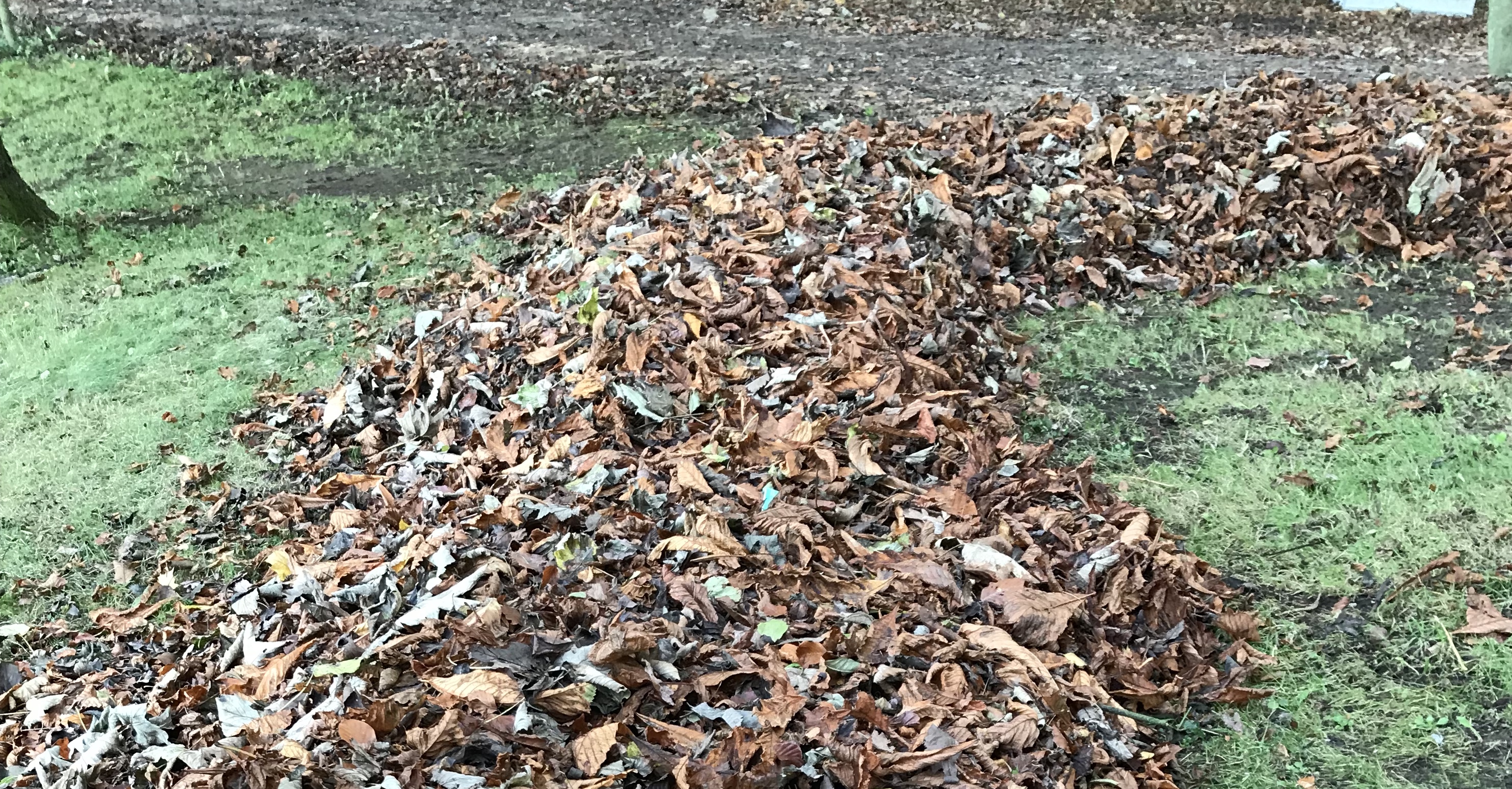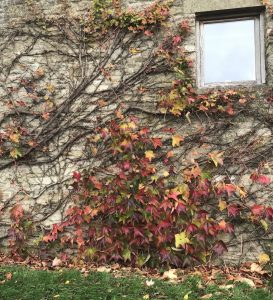Leave it?

“Is there a way to do less leaf clearing?”
The simple answer is no. And anyone embarking on a horticultural career must think about how they will be able to tolerate these kinds of inescapable, repetitive jobs. A common interview question might be what your least favourite task is, and how you get on with it. Leaf clearing is one of those tasks that comes up as an example. And it can be just as daunting or annoying for home gardeners.
So, with the leaves, it’s a good idea to have a think through the ways that you can do the job and keep your sanity. Currently, managing 3 acres of woodland garden, I must do this to avoid reaching the tipping point. There is more to “leaf management” than you might think.
Setting standards and routines can be key. In a large garden, decide how clear it needs to be. If you wanted every single leaf cleared, you could be leaf clearing twice a day, and still be frustrated. So, if you can be more relaxed, then you instead plan  to clear a couple of times a week, and also have some areas with a covering of leaves. You should organise how you will clear leaves from each area and what you will do with them once cleared.
to clear a couple of times a week, and also have some areas with a covering of leaves. You should organise how you will clear leaves from each area and what you will do with them once cleared.
If you are raking or blowing, try to use the wind to your advantage rather than struggling against it, and muster the leaves towards a spot where they naturally gather. Think about whether piling them up on paths or beds will cause you a more difficult mess to clear up afterwards. Heaping them onto gravel paths will leave debris in the gravel and is best avoided. If you heap them on concrete or tarmac, you will need to sweep the last debris from the area. Heaping them on top of planted areas can cause damage to plants. Piling them in a boggy spot will make them wetter and slimey, and you will churn up the ground when working with them. A dry-ish corner of the lawn, or a nook at the back of a building often works well.
To pick them up, a big fanned rake, two boards, or plastic “hands” will all make your life easier. If the leaves are on a lawn, and not too thickly spread, you can run over them with a mower. Use a high setting on the mower as you don’t want to cut the grass hard at this time of year. A mower will hoover up the leaves and shred them as they go through the mower blades. Shredded leaves are more compact and they will also break down quicker in compost.
And so we come to the next question – what to do with leaves?
Leaves are a valuable addition to compost, adding more “brown” matter, which will improve your compost’s structure at a time of year where you might otherwise have a glut of grass clippings and green leafy plants. So you can happily add them to a compost heap.

Alternatively, you can keep them separate from the rest of the compost, to decay and make a leaf mould. After a year or so, this will make a nice, light compost or mulch which can be put to a range of uses on the garden. How you make leaf mould depends on how many leaves you have, and what kind of space: you
can bag them up and leave them to decompose in black plastic sacks; you can make yourself a very simple cage using chicken wire and stakes; or you can reserve a compost bin for them. Leaves on their own will break down more slowly than compost, producing less heat during the process.
Leaves that you don’t pick up can be left as a thick coating over woodland or shrubby areas in winter (but not over grass as it will die from the lack of light). A leaf covering will make a good protective mulch – keeping the ground warmer and moist, suppressing weed growth, and potentially making a good wildlife habitat (although this includes for pests like slugs!). Bear in mind, a thick coating of leaves won’t have vanished or broken down by spring. So you might have to return to them a few months later if you want to use the area for planting, or have it looking neat and tidy in spring.
There are many other things you can use leaves for. For example, I also use fallen leaves as winter protection for my tree fern. I gather a couple of small bag loads and pack them into the crown when the weather starts to get cold. This stops the growing tip getting frozen and also provides a bit of feed for the fern. Remove the leaves from the crown once the frosts are over in spring and you will probably be able to feel the points of new shoots forming amongst the hairs at the top of the trunk.
As a last resort, you can of course burn or bin leaves. But allowing all the nutrients they contain to return to the soil will be of much greater benefit to your garden and plants.